As census night approaches, and we think about how future generations will study and judge us, it’s timely to think of those who have gone before. Including, for example, the residents of 16 Palmerston Park in Rathmines, Dublin 6, who were enumerated in the 1901 census as Richard Hewitt; his wife, Sarah Hewitt; their cook, Julia O’Brien; and their housemaid, Martha Dobson.
Built between 1875 and 1882, the first lease on number 16 was signed in 1876 between the Rt Hon William Francis Cowper Temple and Gilbert Cochrane, and in 1885 Cochrane sold it to the Hewitts. In the years from 1919 it seems to have changed hands four times, and the current owners are the second generation of the family who bought it in 1939. It is now for sale through Sherry FitzGerald with an asking price of €3.8 million.
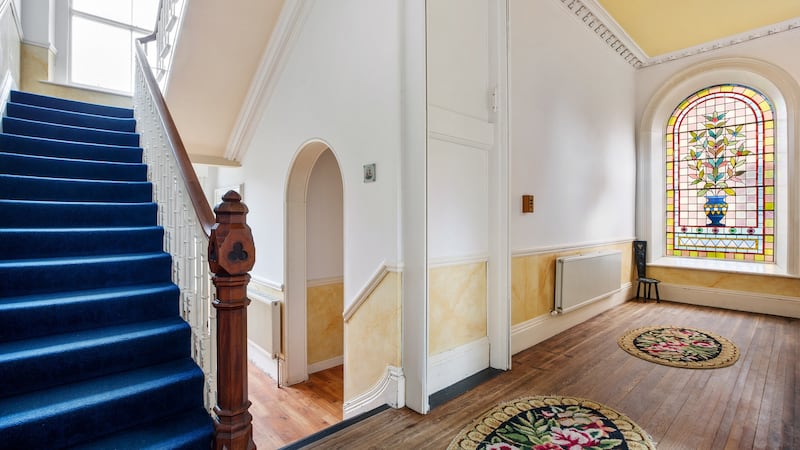
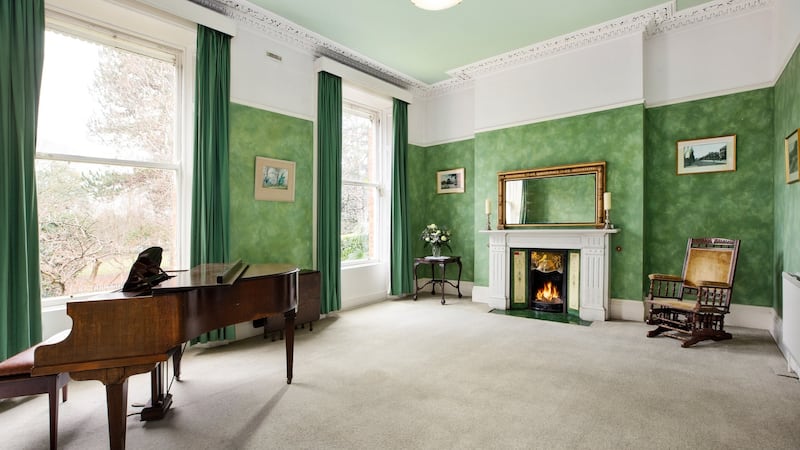
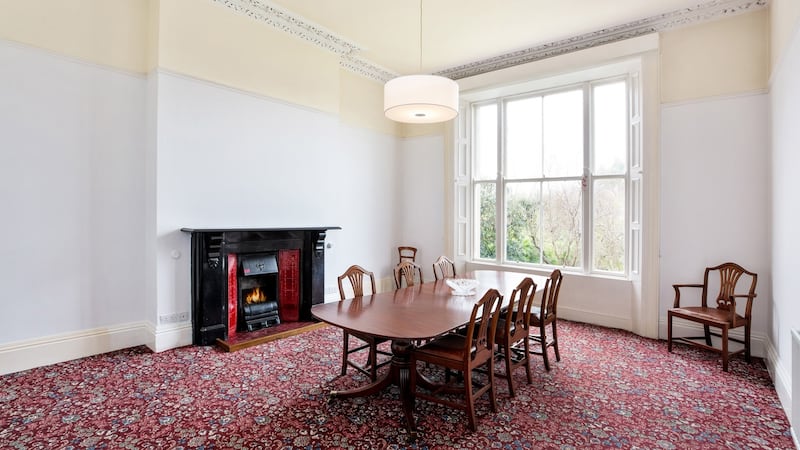
Number 16 is one of three similar pairs on this stretch, to the left as you come up to the top of Palmerston Road and face the lovely park, which was opened to the public in 1895. These houses are depicted on Thom’s 1898 map of Rathmines township, one of many maps reproduced and described in the Irish Historic Towns Atlas published last year by the Royal Irish Academy and edited by Séamas Ó Maitiú.
Writing about the topographical development of the suburb, he notes that the original settlement of Rathmines was centred near here, around a castle, built about 1636 – and probably incorporating an earlier, medieval structure – and demolished in the 1840s. Ó Maitiú says this was also the likely site of the ancient rath, or ringfort, which gives the area its name: “the distinctive curved southern boundary of Palmerston Park may be a vestige of the ringfort”.
The houses on this stretch differ slightly in detail and in plot: number 16, two-storey over basement and four bays wide, has a classic redbrick façade with yellow sandstone string courses. This simplicity offsets the rather wonderful Romanesque-esque doorway, formed of carved stone arches springing from marble columns with decorative finials.
This contrast is reflected throughout the bright interior, where the restrained formality allows the decorative details to shine. The hall is lit by a tall, arched stained-glass window to the side, depicting a vase of jewel-coloured flowers (there is a similar window in the gable wall of number 17, next door).
To the left is a morning room looking south across the front lawn to the park, with a fine cornice edging the ceiling and matching a high-relief, leafy centrepiece; the simple mantelpiece shows off the decorative motifs in the brass canopy and the green-patterned tiles. On either side of the fireplace are bells that we can presume the Hewitts pressed to summon O’Brien and Dobson.
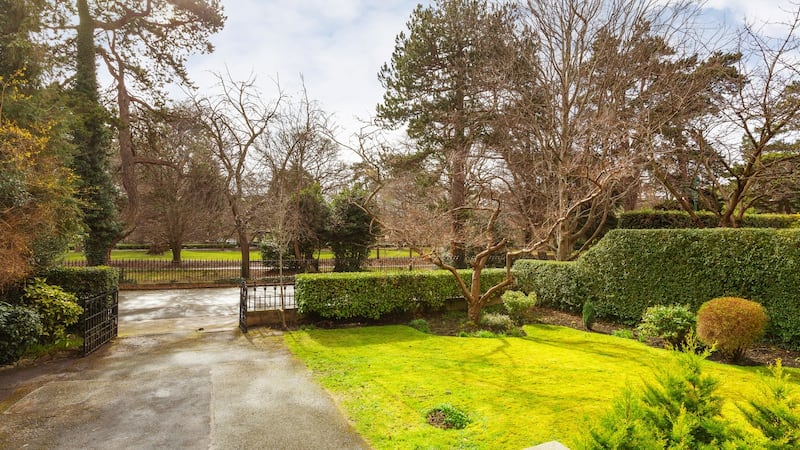
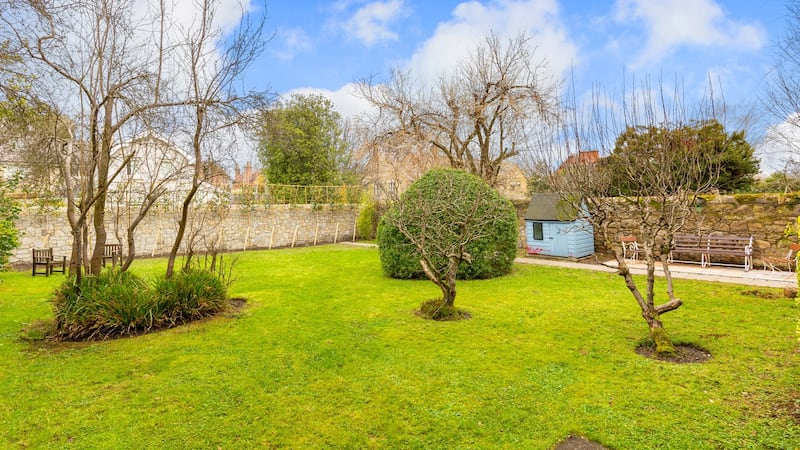
Next door is the grand drawing room, as big as a ballroom, with two front windows and the same finely preserved plasterwork and fireplace.
To the rear, the fine dining room overlooks the rear garden through a wide, multi-paned window. Also on this level, beyond the stairs, are a guest toilet and a smallish fitted kitchen that may originally have been a bedroom.
Most unusually, there is a lift connecting the hall to the first floor and, while it makes the landing layout a bit awkward, any reconfiguration upstairs could incorporate it better. As it is, this floor has three bedrooms, a large en suite and a bathroom with separate toilet. There is a fourth bedroom on the return, beside a big hot press. There is precedent in neighbouring houses to connect this level to the garden.
The house, a protected structure that is Ber-exempt, covers about 408sq m (4,392sq ft), and while the top floors are laid out on a grand scale the garden level is divided more cosily and there is potential to keep this part separate; perhaps for a family member, or as a workspace, or to generate rental income. Stairs lead down from the hall to a kitchen/diningroom at the garden end that opens through to a living room at the front.
Beside this are an office, a spare bedroom and a guest bathroom, with the space under the front steps used for utility and storage. There are two doors out to a side courtyard, which links to the front through a wrought-iron gate.
The main bedroom at this level is wide and bright with a big en suite, and looks out to the back garden, mostly in lawn, bordered by beds and bounded by granite walls. The most recent wall was built in sympathy with the originals to subdivide the site for a mews; most of the coach houses have been transformed in this way. There is room to park a few cars in the front garden, and disc parking on the road outside. Shops, schools and the villages of Rathmines, Ranelagh and Rathgar are all within easy reach, and there are two Luas stops close by.
There’s so much space and scope to update this house for a modern family, without the need to embark on a big glass-box project. It’s all there within the footprint; it just needs the right imagination, flair and care.











